Learn how to create authentic Vegan Kimchi that’s as delicious and tasty as the traditional version using this easy method!
Filled with gut-healthy probiotics, this recipe is fish-free, gluten-free and covers everything you would like to know about kimchi!
For those of you that aren’t conversant in kimchi, it’s basically a fermented cabbage– quite like sauerkraut and it’s sour and salty. The noticeable difference though is that kimchi is spicy and enhanced with Korean flavours like garlic, ginger and red pepper flakes.
Even within the domain of Kimchi, there are numerous diverse variations, sorts of ingredients and preparation methods used. Many Korean dishes use kimchi to flavour their soups, stews and stir-fries, but it’s most ordinarily enjoyed as a side with meals.
People often assume kimchi is extremely hot and spicy but really, it should be only enough to go with a side of rice or be wont to add flavour to your favourite dishes.
The major speciality of this fermented Asian superfood is that it’s full of nutritional value and health benefits. It contains many nutrients like vitamin B6 , vitamin C, vitamin K, folate, iron and riboflavin. it’s enriched with probiotics, which will help strengthen your system and aid in better digestion.
Are you interested to know exactly how this vegan kimchi is made?
Ingredients you’ll need for making a Vegan Kimchi:
We have made an inventory of easily available ingredients that are needed to form vegan kimchi, plus we’ve also added substitution ideas.
- Cabbage – This is often the base ingredient of a Vegan Kimchi. the simplest type of cabbage is Napa cabbage, which is traditional, but you’ll use green or savoy cabbage as they furnish excellent results also.
- Kosher salt – it’s always best to stay with using kosher salt, pickling or other course salts like sea or mineral salts that don’t contain iodine. Iodine, with its antimicrobial characteristics, may intervene with fermentation.
- Apple – It is often substituted with pear or pineapple, just need something with sugar to assist fermentation. It also can be substituted with 2 teaspoons of organic pure cane sugar if needed.
- Onion
- Garlic
- Ginger
For the spice, you’ll need to source out traditional Korean red pepper powder or flakes referred to as Gochugaru (Click the link to check out this product).
You’ll find Gochugaru at Asian grocery stores or online. The peppers aren’t overly spicy, but the extent of spiciness escalates as the kimchi ages.
How to Make a Vegan Kimchi?
It only takes a couple of simple steps to form vegan kimchi, all of which are super easy. Following may be a breakdown of the steps involved.
1. Cut The Cabbage:
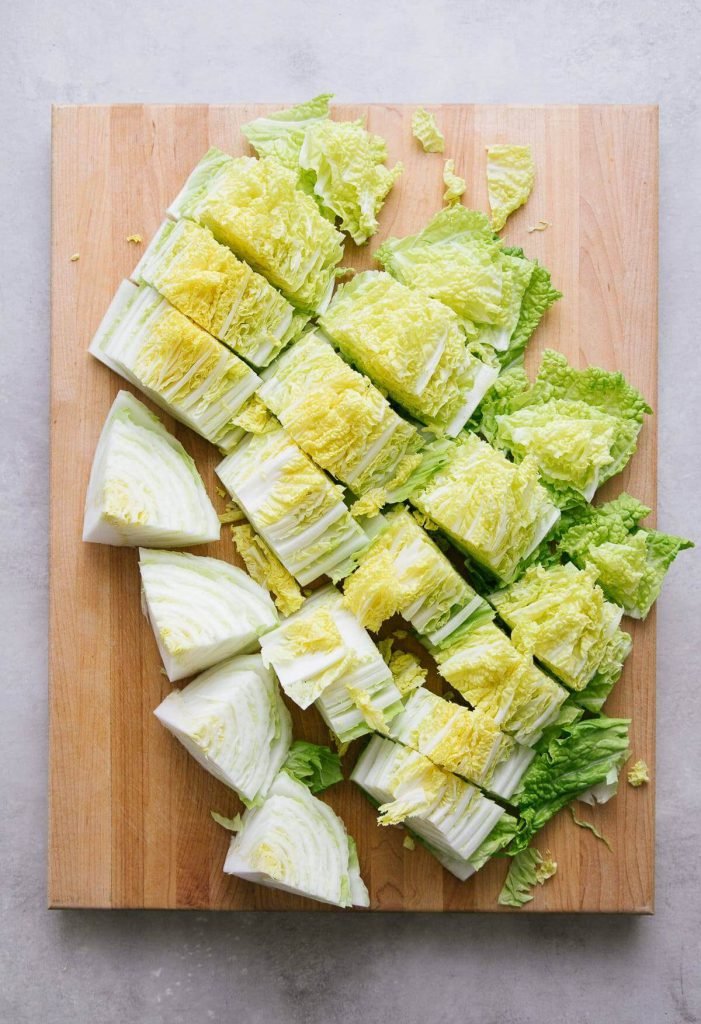
- Quarter the cabbage.
- Slice quarters laterally into 2-inch chunks.
- Discard the very bottom cuts with the core.
- Cabbage will shrink a touch more during the fermentation process so no got to chop it too small. But you’ll consider slicing the pieces with thick stalks (mainly the pieces towards the bottom), slicing them in half will do fine.
2. Brine The Cabbage:
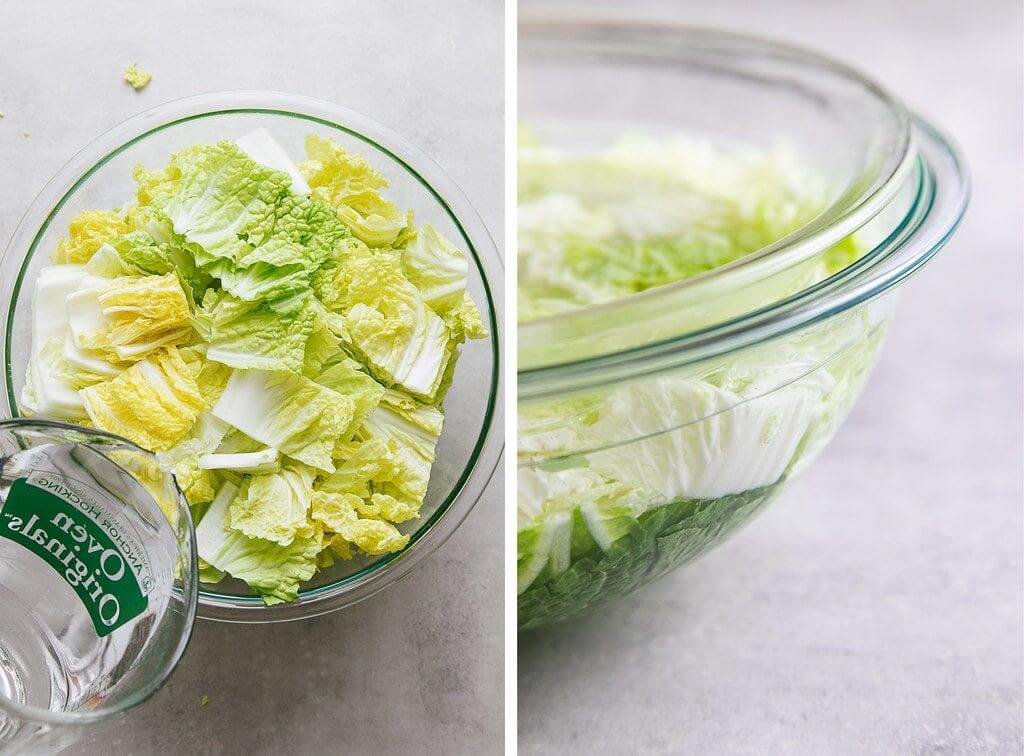
Soaking of the cabbage in saltwater, aka brining, will help draw moisture from the plant cells causing the leaves to wilt. Soaking will move the preparation along tons faster than other methods used and is my preferred method.
Dissolving the salt:
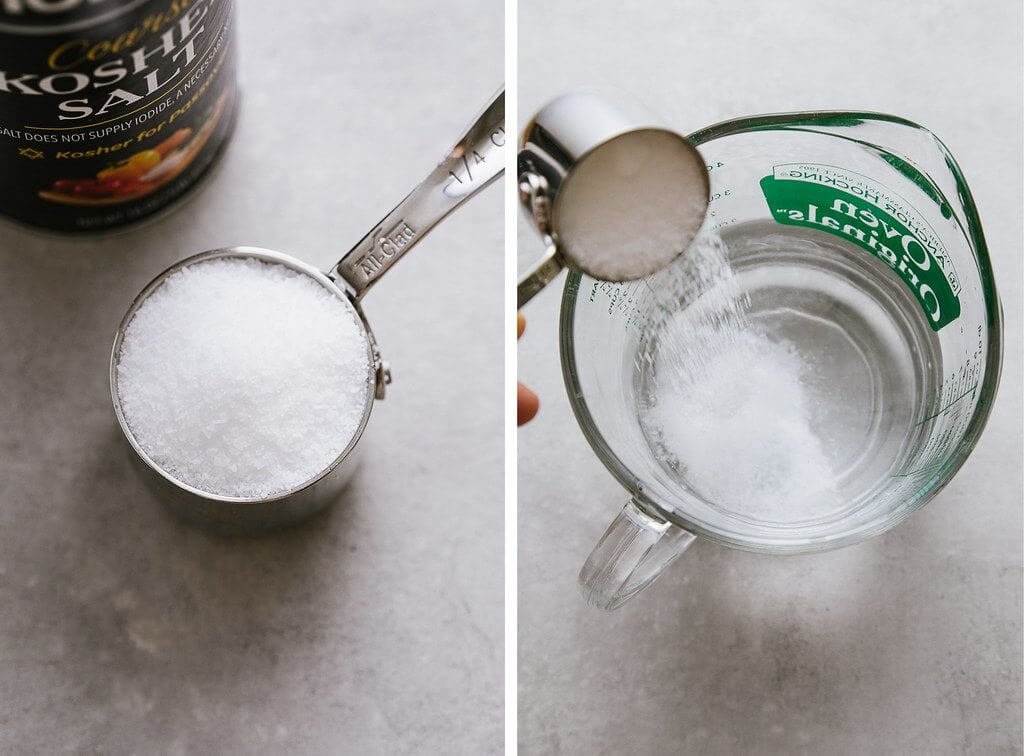
To brine cabbage. Place the cabbage during a large bowl, pour the saltwater overtop, add more water, cover with a dish (and place a weighted object if needed) on top to submerge the cabbage. Let soak for a minimum of 2 hours, up to 12 hours if you wish, but I find 2 hours is plenty. Rinse the cabbage well to get rid of excess salt.
side by side photos showing the method of creating kimchi seasoning.
3. Puree For Kimchi Seasoning:
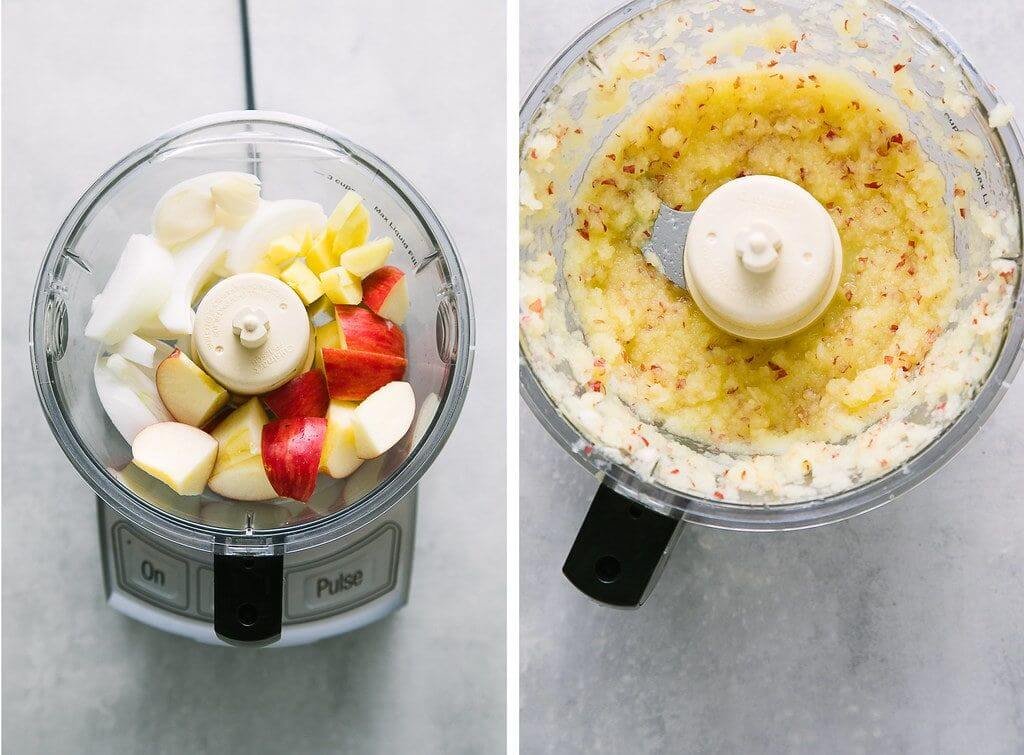
- In a kitchen appliance or blender, puree the apple, onion, ginger and garlic making a sweet and zesty mixture.
- The sugar from the apple will help within the fermentation while adding a touch of sweetness. Some recipes involve a teaspoon or two of sugar instead of apple
- You may wish to add a touch of water to the combination also, about 2 – 3 tablespoons.
4. Mix The Kimchi:
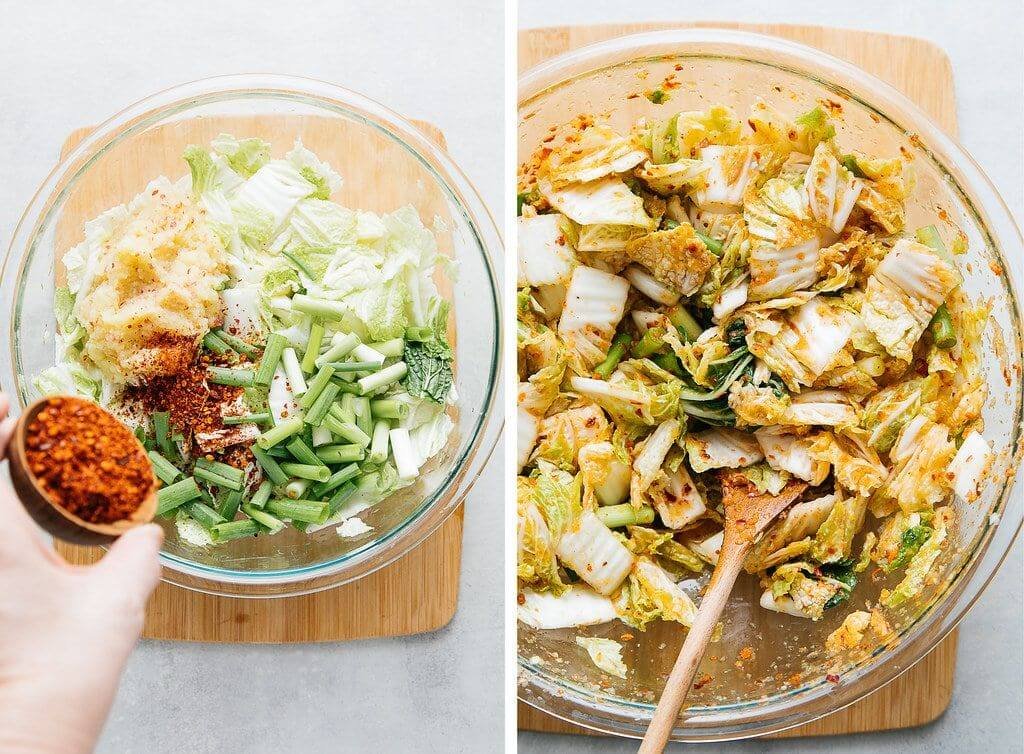
- In the bowl the cabbage was soaked in, add the cabbage, green onions, puree, and Gochugaru, mixing well to coat.
- Some use their hands (gloves are recommended if you do).
5. Fermentation & Storage:
Kimchi relies on fermentation, or the digestion of sugars into acid, gases, or alcohol (not the tipsy kind). This process is what gives kimchi its hallmark effervescence, tanginess, and attractive funk, captured through the natural dynamics between bacteria and their environment.
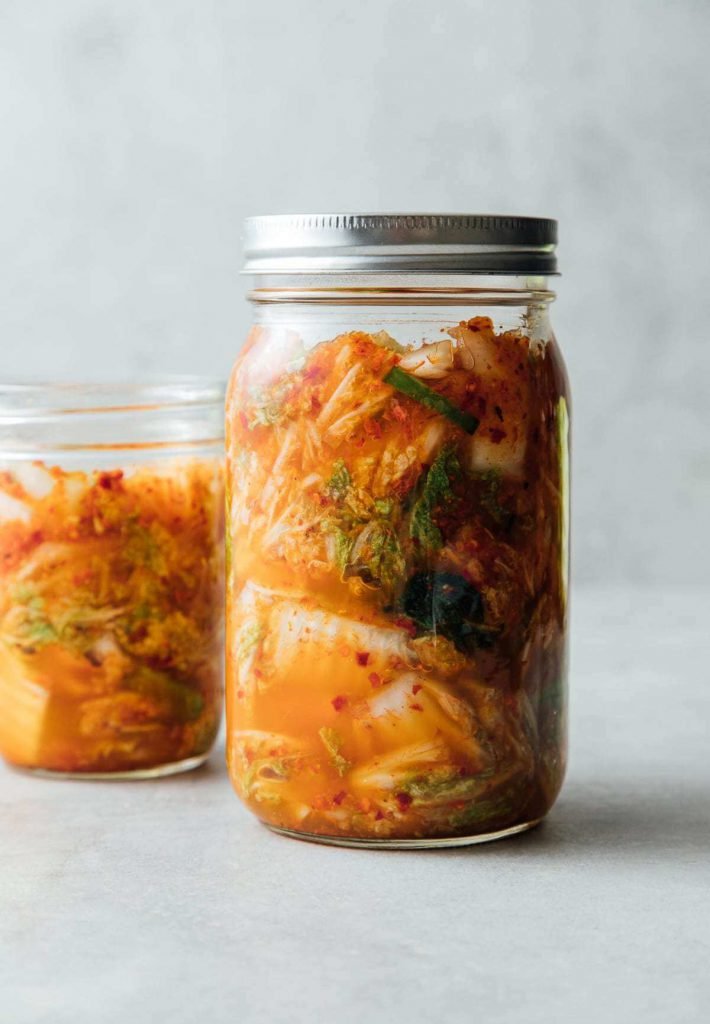
Here is the way to pack and start the fermentation process:
Pack: Place the kimchi into glass jars or containers, packing down the simplest you’ll to shut any air pockets, leaving 1 inch at the highest for gases and air. Add a touch of the leftover juices or brine over the veggies to the only cover, and seal with lid.
Start fermentation: Place on the counter and let ferment for twenty-four – 36 hours. If it’s hot, store during a cool area like a pantry.
Check process: Check after 24 hours and pack down the kimchi, you’ll notice it bubbles because it ferments, this is often normal and an honest sign you’re doing it right. Kimchi shouldn’t taste bad, it should have a tangy, slightly sour and crisp flavour.
Store: Move the kimchi to the refrigerator where it’ll keep for a minimum of a month, maybe 2. it’ll still ferment and is best if stored towards the rear of the refrigerator.
What are you waiting for? Go get your ingredients and start making this delicious Kimchi right away!





Loading…